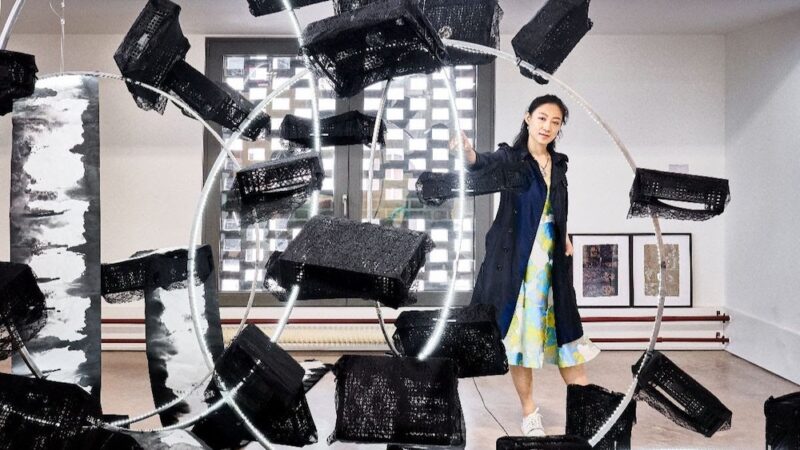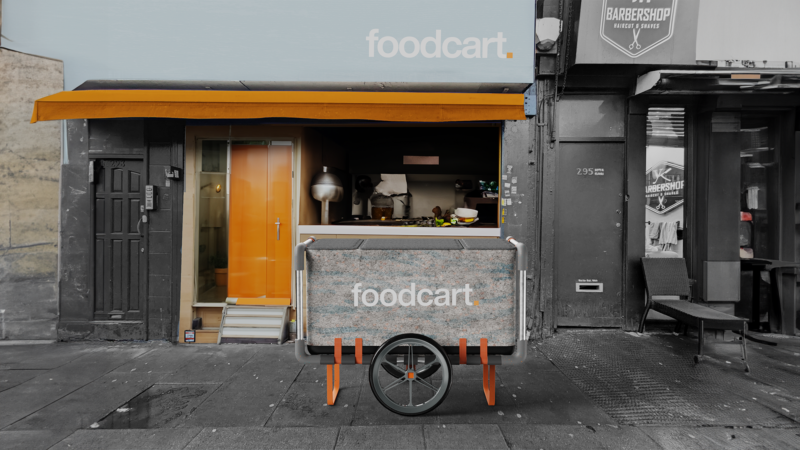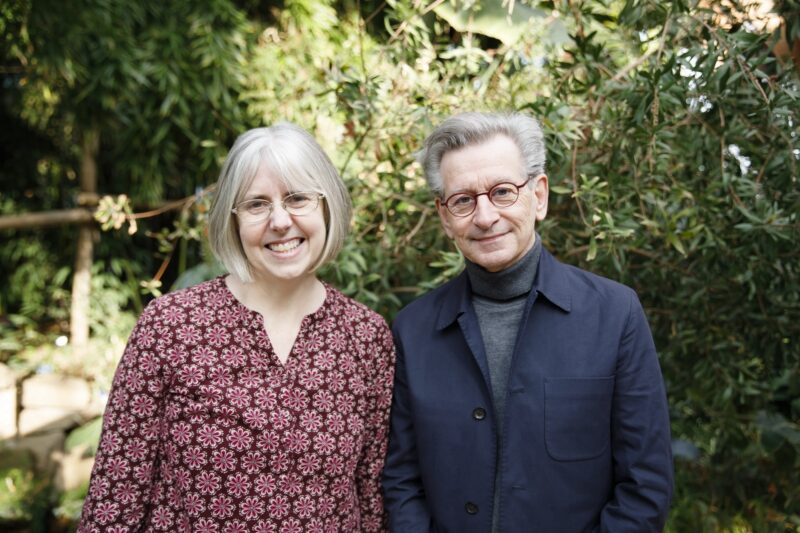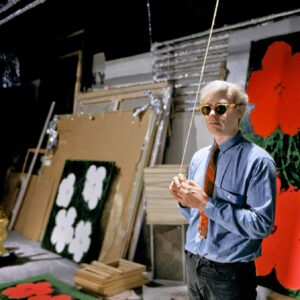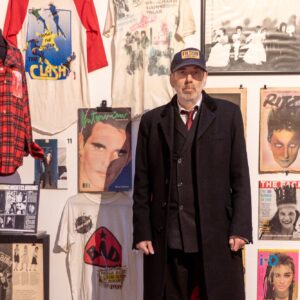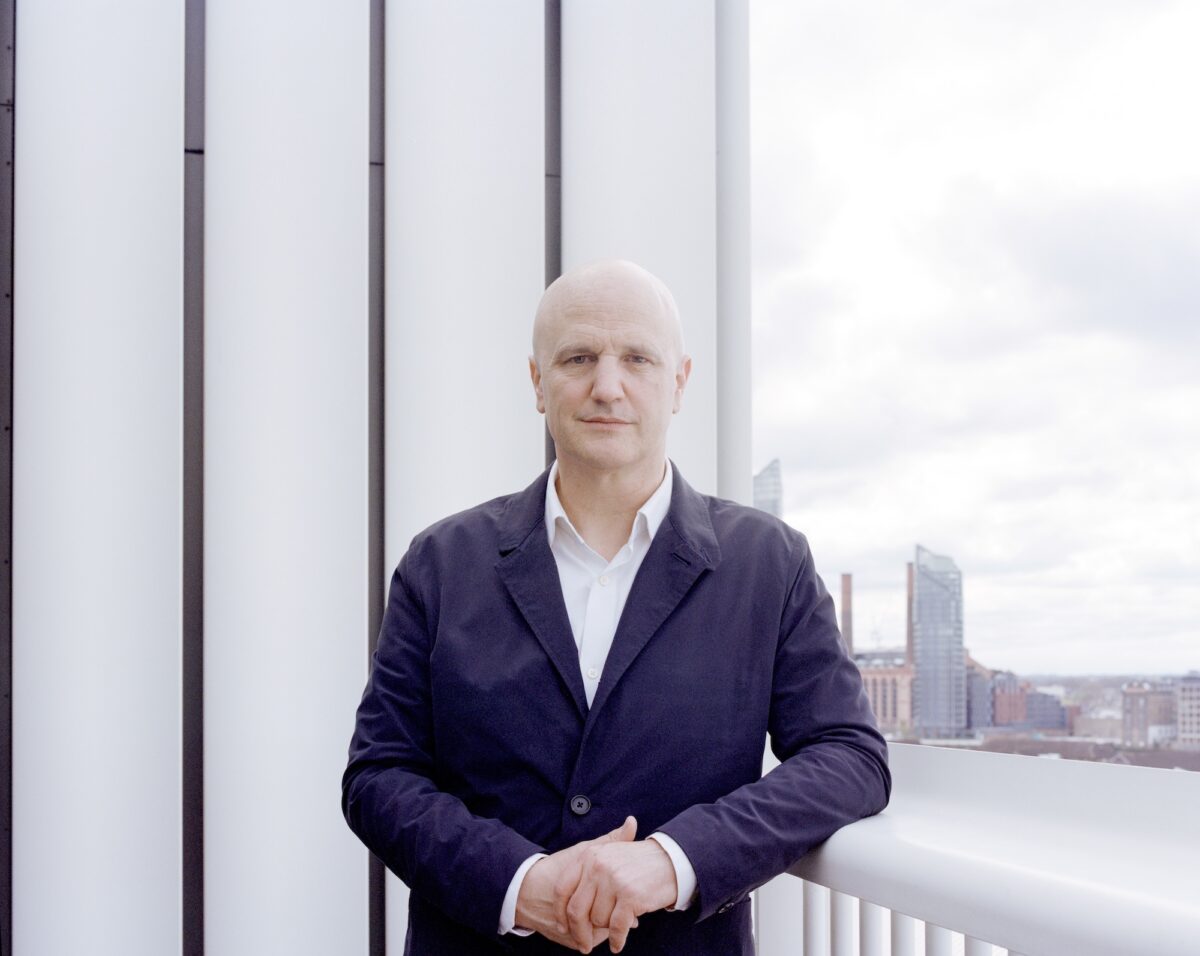
It was announced a couple of days ago that the Royal College of Art (RCA) in London was ranked the number 1 university for art & design internationally for the 11th year in a row, according to the QS World University Rankings by Subject 2025 – the largest world-wide survey of academic and industry opinion, with other UK institutions also being highly ranked. The latest results demonstrate the College’s reputation with an overall score of 97.4 percent.
So it seemed a great time to publish our conversation with – Professor Christoph Lindner (which we did at the end of 2024)
We sat down with – Professor Christoph Lindner eight months into his tenure as President and Vice Chancellor of the Royal College of Art (RCA) he was already deeply immersed in the rhythms and energy of the institution and In this conversation with FAD, he reflects on the RCA’s role in shaping the future of art and design, the importance of accessibility and diversity, and the evolving relationship between creativity, technology, and industry. From the college’s global alumni network to the significance of interdisciplinary exploration, Lindner shares his insights on how the RCA continues to innovate while staying true to its core mission.
How long have you been at the RCA?
Christoph: I’ve been here eight months. In some ways I am very, very new. Eight months is also just long enough to get a sense of the place, to really begin to understand the ecosystem, the rhythms, the biorhythms, to get to know the community, what they’re into, what the mood is like, all that stuff. For me it’s a really great moment, where I’ve just passed every day trying to learn and understand how the place works and who we are, to, “Okay, I’ve got a sense of that, now where do we go, what do we do?” We’re starting to have those conversations in a really explicit way across the college.
Where do you want to go then? Obviously you’ve got lots to consider, there must be financial issues like everyone.
Higher education has always had financial challenges. If you’re in public university life, you will always have. You’ll always be in an environment of limited resources to some degree. For us the question is, obviously we have to be financially sustainable, but that’s not the limiting factor, that’s not the thing that gets us up in the morning. That’s the thing we do in order to enable what really matters for a place like the RCA. For us, our job is to bring together, in the most intense, collaborative way, the best creative talent from all around the world, including right here in London and the UK.
Bringing together this amazing global talent community, where every single member of that community, and especially all our students, are entirely focused on being original, new, different, innovative, every day that they’re here. It’s how do we create the conditions for that kind of community and their activity to thrive. For me, the key to that is you can’t have too strong a vision for what art and design should be, because it’s not our job as the university leaders to control or shape what art and design are. We want our community to keep creating the future of art and design. It’s about leaving that horizon, that future open for our community to invent and reinvent and reinvent from generation to generation.
The key to that, and this I think goes to the heart of your question, where do we want to go, what do we want to do? The key to that is to bring together and support the most creative community possible. If you want that, you have to make sure that things like cost is not an obstacle for talent. We want the most diverse community of students and staff that we can bring together. To enable that, we’ve got to be very realistic about what are the obstacles. Some of them are structural, some of them are geopolitical, some of them are personal, psychological, emotional, but a big one is cost.
We’re very focused now and will be for the coming years on doing everything we can to keep our education as affordable as possible, as accessible as possible, and most importantly, to raise the support, the funding in the form of scholarships to support our students to come here, to thrive while they’re here, and then jump into their careers, wherever they want to go afterwards.
One of the things that strikes me about your community, people don’t leave when they leave. I get a lot of press releases or information about former students of the RCA doing stuff from the RCA. I think that’s interesting.
Studying here is a very intense, exciting, but also a challenging experience. Whatever program you’re in, there tends to be a really strong experience of bonding within the cohort and working very closely with your staff. That’s part of our educational model, being studio-based, is that our academic staff work very closely with our students. Everybody’s forming really strong relationships, and then that carries on into people’s lives after graduation. To give you a great example, we celebrated a few months back, the 50-year anniversary of the ArtBar.
As I’ve come to learn, the ArtBar has been the key social space for this college for a long time. Depending on who you talk to, people like the Rolling Stones played there, Elton John played there, has all these people who have come through at different moments and eras. At the 50th anniversary, I met three alumni who studied in different programs in the 1970s. After they graduated, they supported each other in launching their careers and have kept in touch, and they go on vacation once a year. They’ve done it ever since. That story is not unusual. That story is actually quite typical.
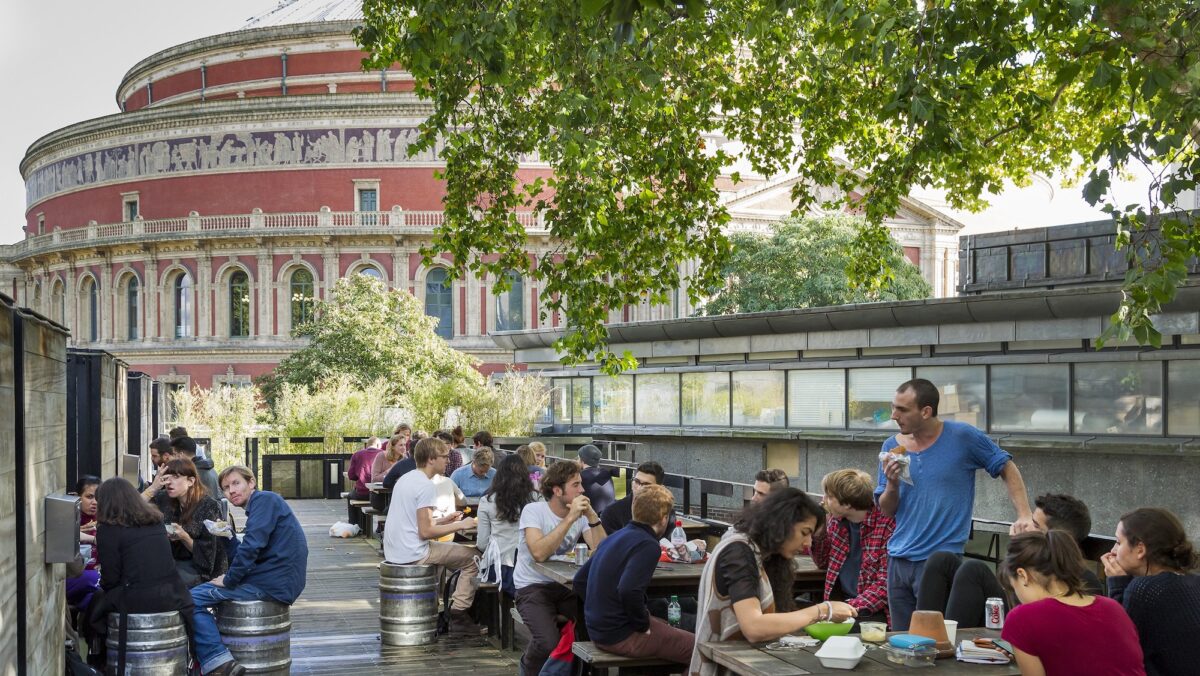
The number of alumni– I just bumped into someone I met earlier this week who is a designer for one of the world’s leading car companies. He still meets once a year with the people that he shared a house with, when he was studying here. One of them is a curator at a really prominent museum. Another one is a fantastic graphic designer with a huge practice. There’s something about our community where we support each other while we’re here, but we also support each other as we go through our careers and lives.
I think that’s a beautiful part of the RCA. Once you come here, you’re somehow connected to this place. You can tap into that and activate it as much as you like. Some people are more active than others, but it’s always there for our graduates.
Yes. I can say from my personal experience, I get a lot of that, which is good. Obviously people want to– Success breeds success. If people come here, they like to tell people they’ve been here. That’s a given.
Also, as we’ve internationalized in recent decades, this network, this group of, this alumni, RCA alumni network, it’s now global. You go to any major city in the world, and there will be these RCA groups from different years and eras who all know each other, talk to each other. We just came back from, this year I went to some alumni reunions we held in LA, San Francisco, and we also just did one a couple of weeks back in Hong Kong and Shanghai. People coming from, graduated in the late ’60s through to graduated last year. They’ve had vastly different lives and careers. They all mostly had a similar message to tell, which is their time here at the RCA is what changed the course of their lives. That’s a really special thing that we get to do.
Yes, I think that’s great. Another thing, and we touched on it while we were talking about the changing landscape. I get a feeling that a lot of the creative disciplines are starting to merge or crossover, or there’s a lot of blurring. I was wondering if that’s likely to feature in what courses you offer. They used to be very specialized. Maybe they’re going to crossover, or whether you’re going to let people jump between modules or that kind of thing.
I think they’re both formal and informal ways in which people explore their interests across disciplines. We’re relatively small for a university, but we nonetheless, have one of the biggest and most diverse ecosystems of creative disciplines. It means that our students, whatever you’re studying, whether it’s photography, sculpture, architecture, fashion, you will be exposed to and will come across and bump into work and students and activities from all the programs around you. I think that’s part of the magic of coming to the RCA, that even if you want to dive very deep into your own area of practice, you’re going to be stimulated by, have exchanges with, challenged by the proximity, co-location of all these other disciplines.
We really encourage people to explore that. When I first arrived, and I was visiting our workshops. I remember going upstairs in this building to the textiles workshop and walking over to the student who was on the looms doing some stuff and saying, “Oh, what’s it like to be a textile student?” They said, “I have no idea, I’m from architecture.” Then I was over in the photography lab and I said to someone, “Oh wow, these amazing facilities, tell me about being in the photography program.” They said, “Oh no, I study fashion.”
I thought it was a really positive sign that our students are able to go and explore beyond their home discipline and get exposed to develop experience because art is not isolated. Whatever your discipline, it all talks. There’s a conversation and a set of exchanges going on. That’s the informal side. If you look then at where our programs are going, what we’re always trying to do is strike a balance between deep disciplinary expertise, because there is a need for people who can do something extraordinarily well, whether it’s ceramics or painting or fashion. To maintain that, to make sure we have it, but then also create programs for those who want to build on that deep disciplinary expertise and bring things together.
We’ve got a range of those. We have the Contemporary Art Practice Masters, which works in a post medium way and allows people to explore their interests and practices across different media. We also have a suite of new masters programs that are designed to take people beyond the disciplinary masters. That’s the MFA, the MRes, the MDes, the MEd. This is a series of master’s programs that allow you to work at the intersection of disciplines. We think there is– Well, we know there’s a lot of interest in that, but we think that interest will grow in the coming years.
I think so. Tapping into science and technology innovation, how do you–
Technology innovation has always been part of art and science. If you go back far enough in the history of universities, there didn’t used to be a difference between art and science. What we did over the last thousand years or so, is we invented disciplines. We invented boundaries. We started to separate out knowledge and practice and skills. I know we did it for very good reasons, very practical reasons.
I think that’s important to remember because even if it’s not explicit and formal, you take a program like painting or ceramics, it’s also about material science and chemistry. Students need to know and understand about those things. They always have. Painters know the materials they work with, whether it’s the surfaces they’re painting on or paint themselves, the pigments, this has technical knowledge involved. If you look at other things like the rise of digital art, the amount of coding and digital innovation that artists, digital artists have practiced over the last several decades alongside the rise of the technologies that enabled it. This is really advanced stuff.
What we’ve done in recent years is start to tease out and make explicit how art and design education actually connects to what we now call science technology innovation. One of the ways we do that is through research. We’ve formed research centers that are very much in what you could call the STEM area. We call it STEAM with an A for art. We have a robotics research lab, a material science research lab with a wet lab, which is cool for an art school. We have material science, computer science, inclusive design. We have all these areas. Oh, and intelligent mobility, which is the future of transport in a green and smart way.
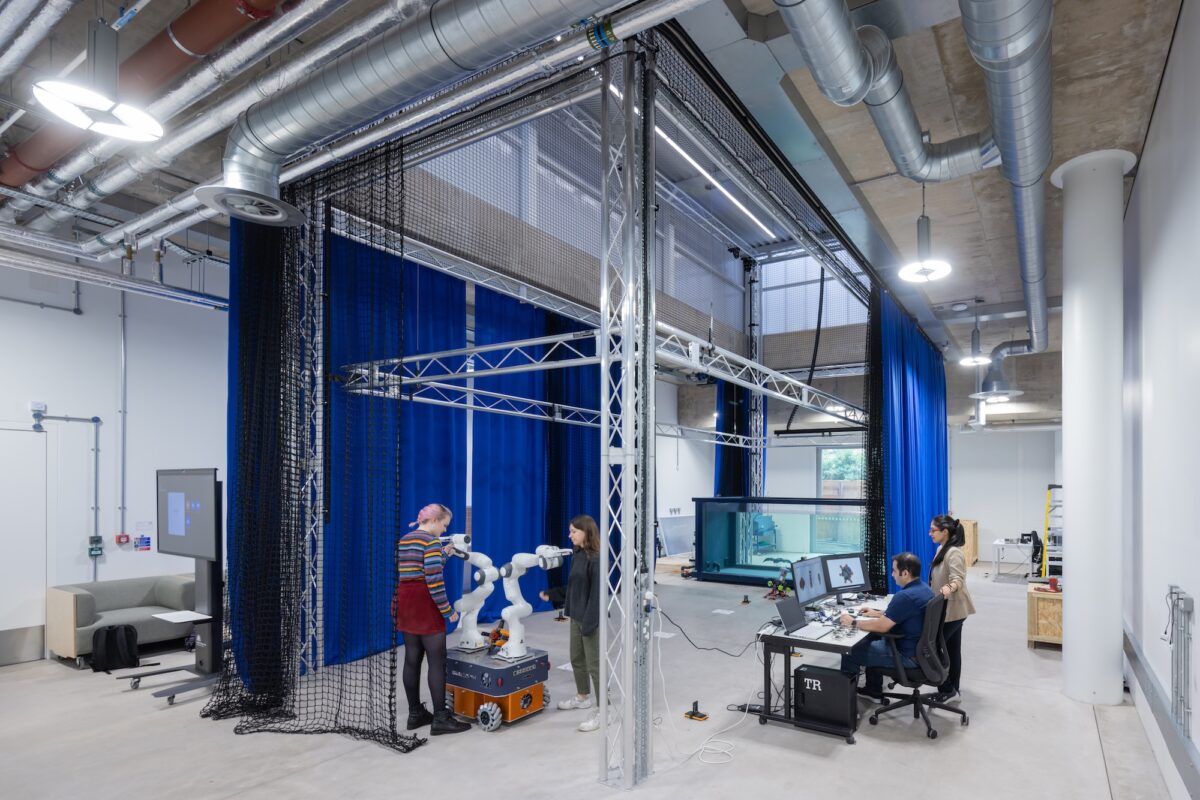
We let that research activity and exploration feed back into our programs and try and energize them. Within the programs themselves, if you take something like AI right now, which everyone is freaking out about, how is this changing our disciplines? What we’re seeing is, our students are innovating with technology right across the board. They’ve always done it. AI is just the latest tool with which to innovate. What it offers are opportunities and technologies that allow you to ask new and different questions and through that produce new and different work.
For us, especially digital technology, it’s not about the flattening of art, the homogenizing of methods and practices. It’s actually a new way to continue to be incredibly heterogeneous, genius, creative, different. Then there’s the part where all of this translates into what government likes to call innovation. There’s a philosophical version of innovation, which is just thinking of new things, doing things in a new way, which is fundamental to art and design. There’s also the ways in which, because we’re a creative community, we produce ideas for products, companies, services that are really unusual and that have been really successful.
Our incubator called InnovationRCA is able to support recent graduates or anyone from the RCA who’s an alumnus at any point in their career, but most of it comes soon after graduation. We support students to develop their ideas into potential businesses and products. We’ve had at least 80 different companies launch out of the RCA over the last 12 or so years. That really reflects thinking about our student community. The kinds of companies that they launch are different to what you get in a comprehensive research university because we’re coming from an art and design background.
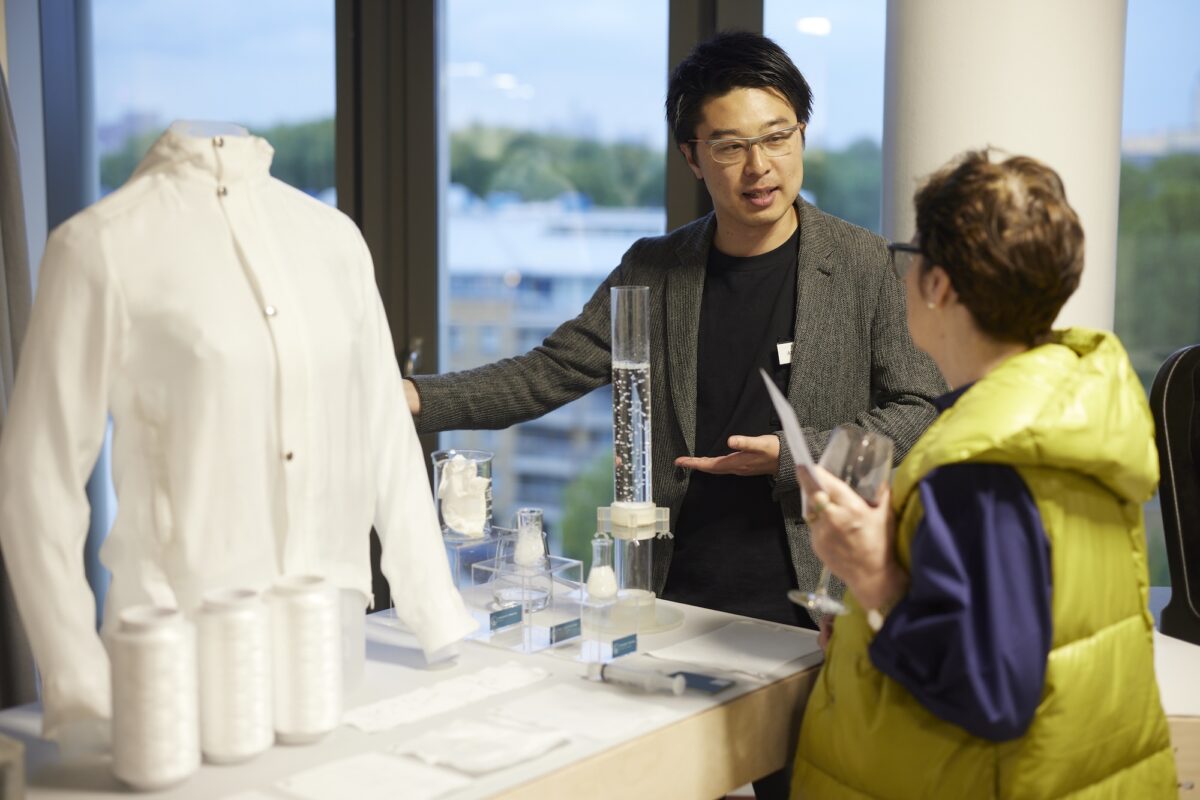
I think wherever you are, you’re trying to solve the same kinds of problems. Climate change, inequality in the world, affordable housing, environmentally friendly materials, health, biodiversity, all these kinds of things. Our solutions and our approach from art and design disciplines, they’re different. They’re able to give alternative ways in to addressing these problems. We won’t be able to solve them alone. When you put what we do alongside what’s coming out, medicine, pharmacy, and those kinds of fields, and engineering. Put all that together along with art and design, and you’ve got a powerful set of possible solutions for the future.
You must see a lot of positivity every day from that kind of stuff.
I think so. I would describe, what I love about this place is that, I describe it as exhilarating. Every day you come in and you see something new and different, that you weren’t expecting, that you maybe don’t even understand. That’s great. Also if you think about creativity, and I know there are versions of creativity where it can come from melancholy and isolation and angst and neglect and all those kinds of things. Ultimately, I think this is a community that is incredibly optimistic about the world and about the future. The drive to create comes from both a recognition that the world needs creativity, but also a belief that creativity does have the power to transform things, it can remake reality. We absolutely believe that.
Yes. Your every day, what is your role in all of this? What do you see your role as?
I think there’s the role that I have as an individual member of the college. My role is President and Vice Chancellor.
There’s how that role connects up to lots of other parts of the college. I think that’s the more interesting and productive bit. My role is to take responsibility for and to work collaboratively with our community to first agree and then deliver what we set as our priorities. Why that role I think is exciting and meaningful is what it really means is, we’re talking about together, about what’s the future of art and design. We can take our disciplines in any direction we want. We can do anything we want with them. It is the most amazingly open future.
What we have to do is help create that future. When you’re in a role like mine, I think it’s really important to work and think inter-generationally. Universities exist over very long periods of time. In the 200 history years of the RCA, my time here will be quite short. What I’m doing, and what my predecessor did, and what my successor will do, is we’re trying to steward this institution and community, and pass it on to the next generation to thrive.
I always, when people talk about stuff like that, I always look at the people who planted these trees, who never got to see them grow, and you just think, “Wow. You know, if it wasn’t for them.” In a way, it’s a similar kind of thing.
We’re talking right now about our 200-year anniversary, which comes around in 2037. It’s not that far ahead. That’s what the conversation is what do we want to do now to help ensure that in 2037, when we’re 200 years old, the RCA is the place that we think it needs to be. It’s very much about thinking about the coming generation and getting things in place for them. That takes time to plant those seeds. It is a lot like growing a forest.
I’ve got quite into gardening recently. In Britain, the people doing the creativity, the gardening, influenced the art world, and the art world influenced the gardening. Hauser & Wirth, have now got a place in Somerset, and the garden’s just / almost as important as the art. This is interesting.
Also gardening, what I like about it, I’m not a gardener myself, but what I appreciate about those who have the passion and patience for gardening is that it is a very creative activity. It’s also a slow activity. I think in a world that is moving faster and faster and faster, finding ways to slow down and think in a longer, deeper way about the future, the next generation, literally planting seeds and imagining what’s to come, that has huge value.
Also, you know that you’re not fully in control, which I think is really interesting. I was talking to this, I think this is an RCA student, this Taiwanese artist, and she was talking about, and I’m a certain age, so I wasn’t surprised, but she is, because she’s quite young. She goes into the dark room to develop. She’s not fully in control. Sometimes the mistakes are the most interesting thing. I think this idea of being a guardian rather than a despot, that’s what she’d say. It’s interesting.
Oh, yes. The idea of the mistake, of serendipity, of failure, of iteration, this is so important to us. I think we’ve got, again, in a world where we so quickly, readily condemn mistakes, we also need to understand how, for innovation, they are a component of success. We are a community that likes to try things that we don’t even know if they can work or will work, and that’s okay. It’s how do we encourage people to feel safe, to have the space, the time, the resource to try new things, knowing that some won’t work, but others will, or sometimes it’s through things not working that you get to the version that does work.
Are you trying things with the organization yourself that are risky?
We are a small public university, so we are constantly trying things out that are risky to maximize our resources for our community.
When you say small, what do you mean? .
Yes, size is an interesting topic because we are large and small at the same time. We are large for an art and design institution, particularly because we are entirely postgraduate. There is no, as far as I know, bigger postgraduate– Only art and design university in the world. More importantly, we’re large in the sense of we have an incredibly diverse ecosystem of disciplines. We’ve maintained many disciplines that other institutions have not been able to. We keep adding new ones as they emerge.
In that sense, we’re huge. If you look at a comprehensive public research university, in most countries, including the UK, we’re small in terms of size. We’re 2,500 or so students. Most mid-sized research universities are 15 to 20,000. Some of the bigger ones like UCL are pushing 50,000 or Manchester. Relative to those institutions, we’re small.
I was talking to someone about how I’ve deliberately kept my overhead low to avoid managing a large team. He mentioned a friend who left a big company to run a university and noted the irony—now, he oversees a massive budget because universities operate like big businesses, with thousands of students paying substantial tuition.
In terms of the amount of money that goes through the whole HE sector in the UK, yes, it is large. What you have to remember, and we are public charities, there’s no profit in this. Whatever revenue we generate, we spend it all right back on the institution. To go back to your question about are we taking risks, are we trying stuff, we are all the time because we need our resources to stretch as far as they can. We’re small, so we can’t do things at scale in the way that a massive 50,000, 60,000, 70,000- student university can.
To give you an example, our sustainability team currently is one person. If you go across the street to Imperial, I’m not sure what the size is, but I’m going to guess it’s 15 to 20. It’s things like that. Where are we trying stuff out? We’re trying to do some bold things with our estate, with our buildings. Post-pandemic, we all work and study in slightly different ways. We’re thinking about how do we recover all the vibrancy of being in places together in person, but also recognizing new flexible ways of working and how people’s work-life balances have shifted and their travel and everything has changed.
How do we use that to create the most dynamic, fun, social, and productive studying and work spaces that we can? That means being willing, and also as a studio-based set of programs, space really, really matters to us. How do we use our spaces in interesting, fun, productive post-pandemic ways? We’re in central London, one of the most expensive places to operate. For lots of reasons, that’s something we’ve got to get right in a way that actually makes our community happy and excited with what we’re doing, but at the same time, we don’t want to leave buildings underused. We’ve got to really make sure that there’s a lot of activity everywhere all the time.
Have you thought about expansion abroad or–?
We’ve talked about this a lot, as a college over the years. This is an evolving conversation since I started. The current thinking, and it could change in the future, but the current thinking is that our size is our strength. We’re small enough that people know each other, they get to know each other, they recognize each other, they take an interest in each other’s work. There’s a real strong sense of community. The strength of that community is something to hang on to and to nurture.
We don’t want to grow in a way that diminishes that sense of community, and we also want to make sure that we don’t grow beyond our capacity for space and things like that.
In London, we’re probably at the upper limit, roughly, of the size we want to be, and with the Battersea campus finishing and opening a brand new studio building, that is us having a lot of new extra space, let’s make sure we just maximize what we’ve already done. The question of internationally, what do we want to do? We’re not looking actively at creating lots of branch campuses all over the world, but what we are thinking about is partnerships.
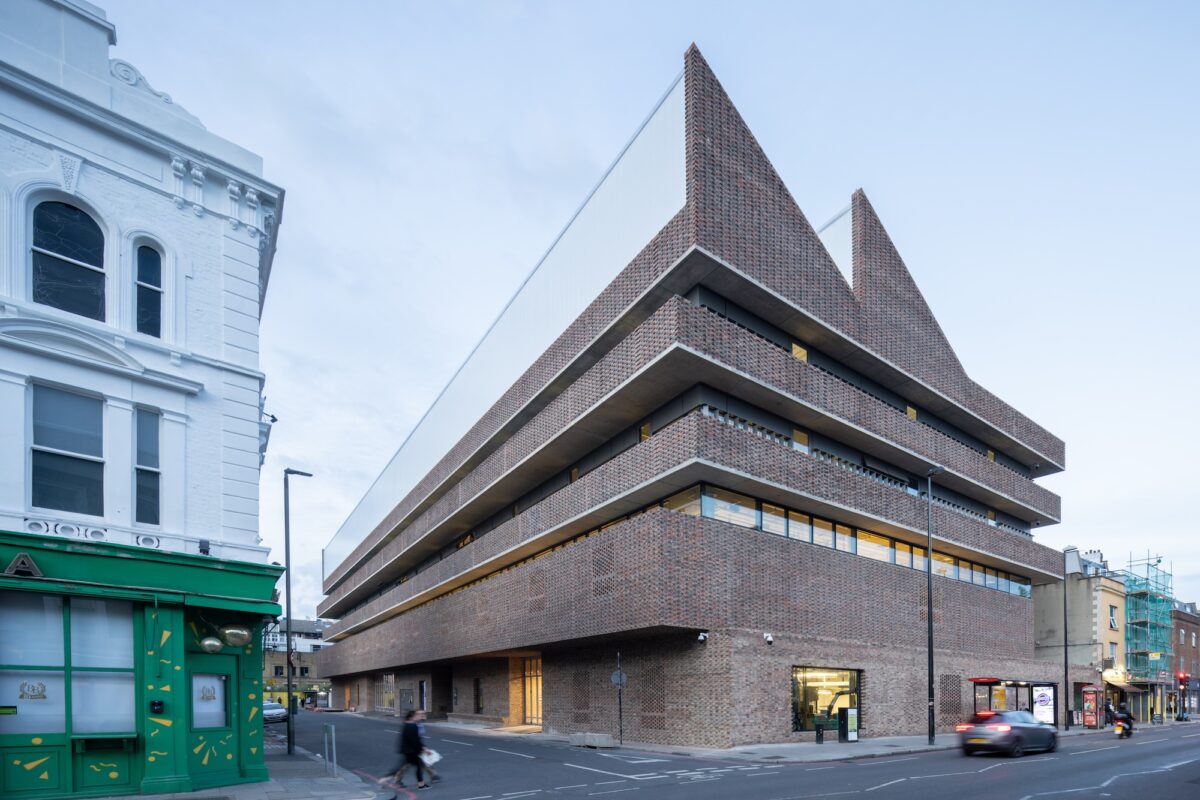
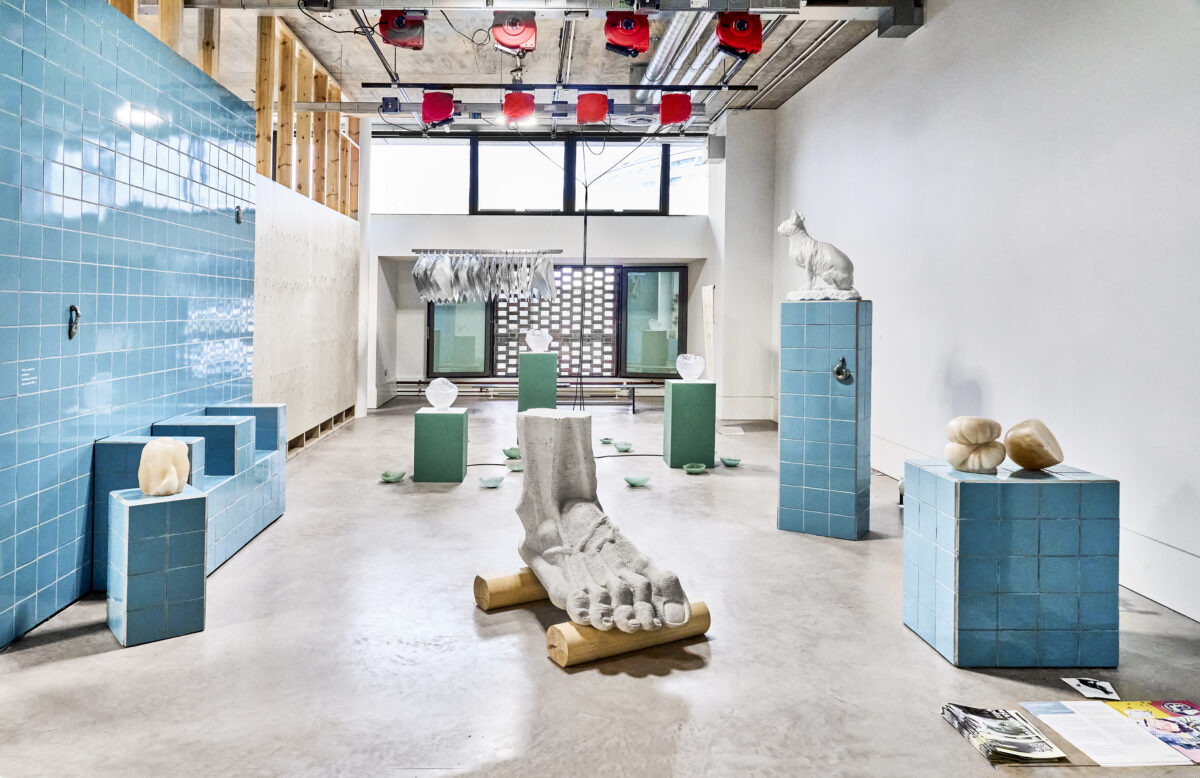
Art and design education, like the art design world of practice, is highly transnational, highly global, and we want to not only be plugged in to those networks, but very actively involved, and maybe even leading on a lot of the key conversations. For that to work, we really need to partner in a strategic way with cities, institutions, organizations, universities around the world. We’re looking at how we can grow that. In the process, and this is something we do care very deeply about as a community. In the process, how can we support the advancement of art and design education, wherever it is in the world? We want to see art and design thrive everywhere.
People talk about the power shift away from Western society to places like China and India. One of the reasons the RCA was created here was because at that time, Britain was probably more important globally than it is now.
We’re not worried about that side of things, in the sense that, I think we live in a world now where we understand there are multiple centers of gravity. I’d rather call them that than power. It’s about centers of gravity, places where creatives cluster, because there’s cool stuff going on.
I think the world can sustain multiple, many clusters of creativity. London is one of them, and historically it’s been an incredibly important center of creativity, and I think it will be for a very long time to come. It’s great that there are others in the world, and I think we should support and encourage that, and then be talking to each other across those centers.
Scholarships, partnerships, you seem, compared to a lot of other art and design, well, mainly art colleges, I know more about, you seem to do more with brands, more awards, more partnerships.
Yes, happy to talk a bit about scholarships, we have just over 300 scholarships. We spend about six million pounds a year on supporting students through scholarships, and we want to grow that number. The RCA has been really active, really passionate in recent years about growing scholarship support, both the money we make available ourselves, and very importantly, the money that our donors and external partners make available to support students. That’s been growing, and we want to keep that growing. It’s really important. We also like to have really active, strong links with industry, all the professions that our disciplines connect to.
That’s partly, maybe most importantly, because it allows us to remain at the cutting edge. If we’re preparing students to go out and be transformative, inspiring designers in fashion, we also need to understand what’s happening in the world of fashion, and bring that back into our studios. We want there to be a circularity of thinking and activity.
It’s good for the businesses as well.
We do collaborate with lots of industry partners, in automotive design, car makers and designers, in fashion, so the fashion houses and architectures, built environment profession, and the same across all of our disciplines. That is really about academic, professional knowledge and relationships. There are times when some of our external industry partners also support scholarships, because they see the value of what we’re doing. In a way, and I would say this, really smart for businesses to invest in scholarships, because what they’re really doing is supporting the talent they can then recruit.
We need all the talent we can to be available for all of the professions to recruit. Sometimes these relationships will also turn into scholarship support. Our efforts in raising scholarships has a momentum of its own. I would say that is probably the single most important thing we can do over the coming decade, to ensure not just our own success at the RCA, but the success of the disciplines we care about.
As a college of two-and-a-half thousand, you’re going to be exclusive, no matter what you do, aren’t you?
I remember, I think it was in the ’90s when I lived in the UK, Marks and Spencer’s had an advertising slogan. You may remember it, “Exclusively for everyone.” Now, I’m not suggesting that’s what we are, but it’s how can we, within the context of being a small postgraduate art design university, be as open, affordable, and accessible as possible? We’re not going to be able to educate every art and design student in the world, but we do want to make it possible for everybody who has the talent and the interest to study with us, to be able to do that.
Being accessible isn’t just about the cost of education, it’s also about the experience of education. When you come to the RCA, do you feel welcomed? Do you feel valued? Can you bring your authentic, creative self? Are we a community that productively engages with difference across practice, art, aesthetics, but also geography, epistemology, language, and more? There’s lots of ways in which we are working to make ourselves open, accessible and affordable. Some of it is scholarships. Some of it is our educational culture and pedagogy and curriculum.
It’s also about who we recruit for staff, as well as students. It’s also thinking about the balance between the UK and the rest of the world. We are a British institution and we’re here to serve the UK public, but we are simultaneously a global community. We’re very privileged and lucky to have students come from all over the world. The global studio experience you can have here, whether you’re coming from across town in London or somewhere in the UK or halfway around the world, that intercultural, transnational experience that you can have in the studio, I think it’s a very precious thing. Everybody benefits from it. We have to make sure that that’s possible in the future.
MORE: @royalcollegeofart Read: RCA on FAD
